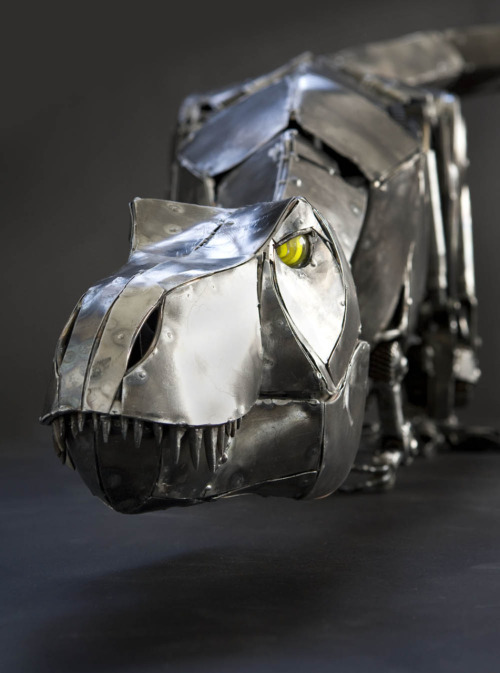Sculpture: Tyrannosaurus Rex
I'm not the first person to recognize the intimate relationship between
art and paleontology. One of the great benefits of writing this blog has
been meeting artists who inspire me with their craftsmanship,
imagination, and dedication to the inherent beauty in biological forms.
Even better than that is learning of the surging culture of young
paleoartists hashing out their form on-line. Their ability and
discipline is humbling and has spurred me on to make a career of visual
science communication. So, when artist Andrew Chase emailed me about his sculpture of Tyrannosaurus rex, my mind was primed to be blown.

Here was an artist who recognized the integrity of the tyrant lizard's
form. This is something I admire in the greatest paleoart, and it's the
reason I harp on scientific accuracy (concerning which, I admit, I still
have much to learn). The greater understanding paleontologists have
given us - how dinosaurs moved, breathed and inhabited their lost worlds
- has resulted in more resonant art.

I asked Andrew what drew him, as an artist, to this particular animal. "Tyrannosaurus has a purity of form that I find beautiful," he answered. "In my opinion, the T. rex is
basically a mouth delivery device, everything else is subordinate to
that. No goofy crests, sails, horns/protrusions for sexual display, for
this baby it's all about the head. What's the tail for? To balance the
head. Legs? Moving the head to the food. Brain? Overrated, keep it small
and you can make the jaws bigger. Arms? Not necessary, lose 'em (well
almost) and increase the size of the head. I think that singular
dedication of purpose is maladaptive but really, really cool."




No comments:
Post a Comment